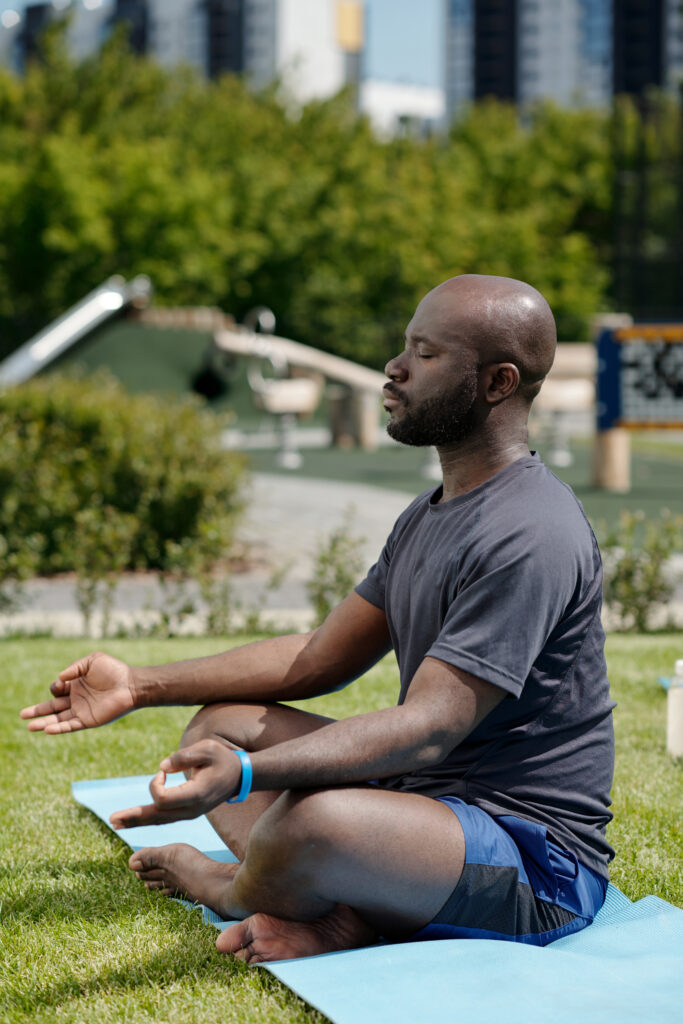Exploring Holistic Approaches: How Sensory Modulation Therapy Benefits First Responders in Trauma Treatment
3/6/2025 by Markie Bryant

First responders face unique challenges and traumatic experiences that can take a significant toll on their mental and physical well-being. Traditional therapeutic approaches may not always address the multifaceted needs of these individuals. This article delves into the benefits of holistic approaches, particularly Sensory Modulation Therapy, in managing and treating trauma among first responders. By integrating innovative techniques and creating healing environments, these therapies offer a pathway to profound recovery and resilience.
Key Takeaways
- Sensory Modulation Therapy harnesses the power of sensory experiences to restore balance and reduce stress in first responders.
- Creating a healing environment, such as a sensory room, can significantly enhance the effectiveness of trauma treatment.
- Holistic approaches like mindfulness, yoga, and nutritional support play a crucial role in the overall well-being of first responders.
- Evidence-based therapies such as EMDR, SE, and MBSR are effective in reducing trauma symptoms and rewiring neuropathways.
- Building emotional resilience and enhancing coping mechanisms are long-term benefits of integrating holistic care into first responder programs.
Understanding Sensory Modulation Therapy

The Science Behind Sensory Modulation
Sensory Modulation Therapy (SMT) is an innovative approach that leverages sensory experiences to help individuals manage stress and restore balance. This therapy is particularly beneficial for first responders, who often face high-stress situations. By engaging different sensory inputs, SMT aims to regulate the nervous system and improve overall well-being.
Key Techniques Used in Sensory Modulation Therapy
Several techniques are employed in SMT to achieve its therapeutic goals:
- Deep Pressure Stimulation: Applying firm pressure to the body to promote relaxation.
- Weighted Blankets: Using blankets with added weight to provide a calming effect.
- Aromatherapy: Utilizing essential oils to influence mood and stress levels.
- Sound Therapy: Incorporating soothing sounds or music to create a tranquil environment.
Benefits for First Responders
First responders often encounter traumatic events that can lead to sensory modulation difficulties. SMT offers numerous benefits for these individuals, including:
- Reduced Stress: Helps in lowering stress levels through sensory engagement.
- Enhanced Coping Mechanisms: Improves the ability to handle stressful situations effectively.
- Emotional Balance: Aids in achieving emotional stability and resilience.
Sensory Modulation Therapy is a cornerstone treatment modality designed to meet the unique challenges faced by first responders, offering a pathway to profound recovery and resilience.
The Role of Sensory Rooms in Trauma Treatment

Creating a Healing Environment
The purpose of a sensory room is to create a safe and supportive environment where individuals can explore and interact with their surroundings. These rooms are designed to be calming and therapeutic, offering a sanctuary for those dealing with trauma. Sensory rooms often include various elements such as soft lighting, soothing sounds, and tactile objects to help individuals feel grounded and secure.
Types of Sensory Inputs Utilized
Sensory rooms utilize a variety of sensory inputs to aid in trauma treatment. These can include:
- Visual stimuli: Soft lighting, calming colors, and visual projections.
- Auditory stimuli: Soothing music, nature sounds, and white noise.
- Tactile stimuli: Soft fabrics, weighted blankets, and textured objects.
- Olfactory stimuli: Aromatherapy with calming scents like lavender and chamomile.
- Proprioceptive stimuli: Equipment like balance boards and rocking chairs to help with body awareness.
Case Studies and Success Stories
Numerous case studies highlight the effectiveness of sensory rooms in trauma treatment. For instance, first responders who have utilized sensory rooms report significant reductions in stress and anxiety levels. One notable success story involves a firefighter who, after regular sessions in a sensory room, experienced improved sleep patterns and a greater sense of well-being.
Sensory rooms offer a unique and effective approach to trauma treatment, providing a multi-sensory experience that promotes healing and resilience.
Integrating Holistic Approaches in First Responder Programs

Mindfulness and Meditation
Mindfulness and meditation are essential components of holistic approaches for first responders. These practices help in reducing stress, enhancing focus, and promoting emotional stability. By incorporating mindfulness techniques, first responders can better manage the high-pressure situations they face daily.
Yoga and Physical Wellness
Yoga offers a dual benefit of physical fitness and mental relaxation. It helps in improving flexibility, strength, and overall physical wellness. Additionally, yoga practices can aid in reducing anxiety and improving mental clarity, making it a valuable tool for first responders.
Nutritional Support
Proper nutrition is crucial for maintaining the physical and mental health of first responders. A balanced diet can enhance energy levels, improve mood, and support overall well-being. Nutritional support programs can provide first responders with the knowledge and resources they need to make healthier food choices.
Holistic trauma-focused care integrates comprehensive wellness approaches, ensuring physical, emotional, and mental health are addressed in unison. This safe, empathetic environment fosters profound healing and resilience, making it an ideal choice for those who serve.
The Impact of Trauma on First Responders
First responders are particularly vulnerable to trauma due to the nature of their work. They are often exposed to situations that are inherently dangerous and unpredictable, and they may have to make split-second decisions that can have life-or-death consequences. In addition, they may face pressure to suppress their emotions and maintain a tough exterior, which can lead to feelings of isolation and burnout.
Common Traumatic Experiences
First responders frequently encounter traumatic events such as severe accidents, violent crimes, and natural disasters. These experiences can have a profound impact on their mental health, leading to conditions like PTSD and anxiety disorders. Understanding the impact of trauma on first responders is essential for developing effective interventions to help them cope and recover.
Psychological and Physical Effects
The psychological effects of trauma on first responders can include flashbacks, nightmares, and severe anxiety. Physically, they may experience symptoms such as chronic pain, fatigue, and cardiovascular issues. The combination of these effects can significantly impair their ability to perform their duties and maintain a healthy personal life.
Challenges in Seeking Help
Despite the availability of various therapeutic approaches, first responders often face challenges in seeking help. Stigma surrounding mental health, fear of job-related repercussions, and a lack of awareness about available resources can all act as barriers. It’s crucial to create an environment where first responders feel safe and supported in accessing the help they need.
By recognizing the unique challenges faced by first responders, therapists can develop tailored approaches to therapy that address the specific needs of this population. This can include techniques such as EMDR, SE, and MBSR, which have been shown to be effective in reducing the symptoms of trauma in first responders.
Evidence-Based Therapies for Trauma Recovery

Eye Movement Desensitization and Reprocessing (EMDR)
EMDR is a structured therapy that encourages the patient to briefly focus on the trauma memory while simultaneously experiencing bilateral stimulation (typically eye movements), which is associated with a reduction in the vividness and emotion associated with the trauma memories. This method has shown significant success in trauma treatment, particularly for first responders who often face high-stress situations.
Somatic Experiencing (SE)
Somatic Experiencing focuses on the body’s natural ability to heal itself. It helps individuals become aware of their bodily sensations and release the pent-up energy associated with trauma. This approach is particularly beneficial for those who have experienced physical trauma or chronic stress.
Mindfulness-Based Stress Reduction (MBSR)
MBSR combines mindfulness meditation and yoga to help individuals become more aware of their thoughts, feelings, and body sensations in a non-judgmental way. This practice can significantly reduce stress and improve emotional regulation, making it a valuable tool in trauma recovery.
These techniques, along with a supportive therapeutic relationship, provide trauma survivors with the tools to process their trauma, develop resilience, and move toward healing and recovery.
Developing Resilience Through Holistic Care
Developing resilience through holistic care is a multifaceted process that equips individuals with the tools and insights necessary to navigate future challenges with strength and adaptability. This approach emphasizes the importance of integrating physical, emotional, and psychological wellness to ensure a balanced recovery. Holistic healing is not just about addressing immediate symptoms but fostering long-term well-being.
Building Emotional Resilience
Emotional resilience is crucial for first responders who often face high-stress situations. Through trauma-focused therapy, individuals can develop resilience and strengthen their sense of self-efficacy. This process involves addressing and healing from trauma, which in turn helps individuals gain a renewed sense of control over their lives.
Enhancing Coping Mechanisms
Enhancing coping mechanisms is another vital aspect of holistic care. By promoting emotional healing and resilience, trauma-focused therapy empowers individuals to navigate the aftermath of trauma, rebuild their lives, and thrive. This journey is an investment in oneself, promising more than just momentary relief—it’s a commitment to a future where wellness and resilience become cornerstones of one’s existence.
Long-Term Benefits of Holistic Care
The long-term benefits of holistic care are profound. Participants are encouraged to cultivate a sustainable lifestyle of wellness through a combination of personalized therapy, evidence-based practices, and supportive communal activities. This comprehensive approach ensures that physical, emotional, and mental health are addressed in unison, fostering profound healing and resilience.
Finding the Right Support for First Responders
Choosing a Qualified Therapist
For first responders experiencing trauma, it’s crucial to find a therapist who specializes in working with individuals in high-stress professions. A therapist trained in evidence-based therapies like EMDR, Somatic Experiencing, or Mindfulness-Based Stress Reduction can be particularly effective in addressing trauma. These therapies help in rewiring neuropathways affected by trauma, enhancing the ability to recover and continue serving the community.
Accessing Community Resources
First responders have access to a variety of community resources designed to support their mental health. These resources can include local support groups, mental health hotlines, and specialized treatment centers. Don’t hesitate to reach out for help; there are resources available to support you.
Support Networks and Peer Groups
Building a strong support network is essential for first responders. Peer groups can offer a safe space to share experiences and coping strategies. These networks can be invaluable in providing emotional support and practical advice, helping first responders navigate the challenges they face.
The unique job of a first responder comes with unique challenges that can lead to trauma and mental health issues. By finding the right support, first responders can better cope with the trauma they experience and continue to serve their communities.
Finding the right support for first responders is crucial for their mental health and well-being. At After Action by AM Health Care, we offer specialized programs tailored to meet the unique needs of these heroes. Whether you’re looking for a 2 Week Tune-Up or a 30 Day Reset, our comprehensive services are designed to help you on your journey to recovery. Visit our website to learn more and take the first step towards healing today.
Conclusion
In conclusion, holistic approaches such as Sensory Modulation Therapy offer significant benefits for first responders dealing with trauma. By integrating therapies that address all eight senses, programs like After Action in California provide a comprehensive treatment plan that helps first responders restore balance, reduce stress, and enhance their coping mechanisms. These innovative, evidence-based therapies are tailored to meet the unique challenges faced by first responders, offering a pathway to profound recovery and resilience. As we continue to understand the impact of trauma on first responders, it becomes increasingly clear that holistic, trauma-focused care is essential for their healing and long-term well-being.
Frequently Asked Questions
What is Sensory Modulation Therapy?
Sensory Modulation Therapy is a therapeutic approach that uses sensory experiences to help individuals regulate their emotional and physiological responses to stress and trauma. It is particularly effective for first responders who face high levels of stress and trauma in their line of work.
How does Sensory Modulation Therapy benefit first responders?
This therapy helps first responders by restoring balance, reducing stress, and enhancing coping mechanisms through the use of sensory experiences. It addresses both emotional and physical symptoms of trauma, making it a comprehensive treatment option.
What are some key techniques used in Sensory Modulation Therapy?
Key techniques include the use of sensory rooms, weighted blankets, aromatherapy, and tactile stimulation. These techniques help in activating and regulating the eight senses to promote healing and emotional well-being.
What types of sensory inputs are utilized in Sensory Modulation Therapy?
Sensory Modulation Therapy utilizes various types of sensory inputs including visual, auditory, tactile, olfactory, gustatory, vestibular, proprioceptive, and interoceptive inputs. These inputs help in creating a balanced sensory environment that aids in trauma recovery.
Are there any case studies or success stories related to Sensory Modulation Therapy for first responders?
Yes, there are several case studies and success stories that highlight the effectiveness of Sensory Modulation Therapy in treating trauma among first responders. These stories often showcase significant improvements in emotional regulation, stress reduction, and overall well-being.
How can first responders find the right support for Sensory Modulation Therapy?
First responders can find the right support by choosing a qualified therapist who specializes in Sensory Modulation Therapy and has experience working with individuals in high-stress professions. Accessing community resources and support networks can also be beneficial.